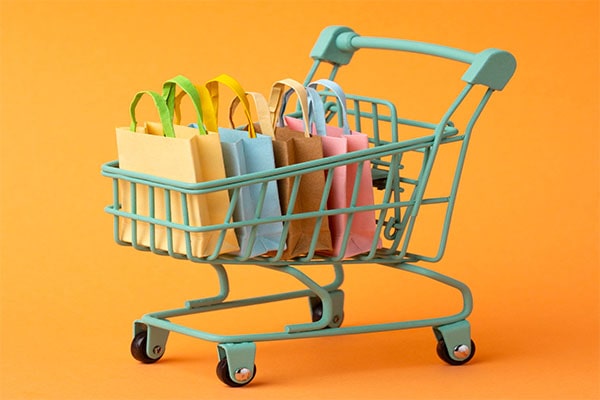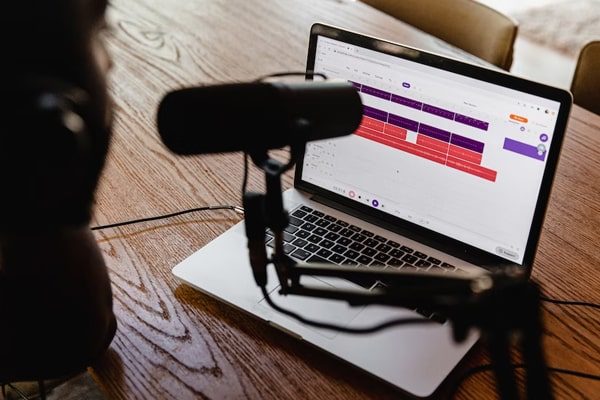How to Keep Your Fashion Shopping Under Control and Budget In 2023
Do you have a penchant for shopping for the latest fashions? Do you need help to stay on trend AND within your budget? Do you find yourself buying items for the sake of it or because they are inexpensive, only to see them sit in your closet for months gathering dust?
The pursuit of fashion and be a long and arduous one. Every season brings with it new opportunities and additional ways to rack up debt. Your efforts to stay on point are, for the most part, guided by fashionistas, magazines, and items on display on and offline, and you are, of course, eager to keep up to date, but no sooner has winter been and gone, than spring arrives with another challenge for you to overcome.
If you want to keep your fashion spending under control, we can help you. It is possible to dress with aplomb and do so without encountering the wrath of your bank manager, and below we’ll set out some ways to rein in your spending and organize your entire approach more shrewdly.
Shop Smart
When trying to meet the challenge of staying on trend, you should temper your expectations and approach the task in an organized and dispassionate manner. For instance, if you do most of your fashion shopping online (and that really is the most cost-effective way of doing so), then consider running this type of test.
Visit your favorite online store and spend as much time as you like racking up the items that really catch your eye. Don’t hold back every piece that attracts your attention; place it in your shopping cart.
Once you are done and can shop no longer, take a look at the never-ending mass of items in your cart, and then, and this is the key part, log out. A week or so later, revisit that site and take a look at what’s in your cart. You’ll be amazed at how you’ll approach those pieces; it’s very likely that you’ll remove a large number of pieces on the second viewing.
This way of delaying the purchasing aspect is a great way to reduce needless spending. It also helps if you set a specific date, perhaps one day a month, when you can make the purchase.
That way, you are delaying gratification and dealing with the task in a more reserved and pragmatic fashion.
Accessorize
Many people fail to make the best use of accessories, considering them something of a fashion afterthought. Your approach to accessories should actually be reversed, especially if you want to keep costs down.
Wisely selected accessories can breathe new life into your tired wardrobe or can form a crucial part of a whole new ensemble, and it’s time to treat these items with the respect they deserve.
For instance, when it comes to items of jewelry, consider a charming, elegant, and sophisticated name necklace, and watch, as this delightful item can be paired with multiple looks and outfits.
A fabulous handbag can, in many ways, be the essential item in your entire closet, and it’s something that you’ll use far more often than an individual dress, top, or any other item of clothing.
Sales Sales Sales
Try to do as much of your shopping on specific sales days. Whether that’s individual sales that specific stores offer or general online dates like Black Friday. The idea here is to be more laser focused in your quest.
The key here is quality over quantity. In other words, there’s no need to shop dozens of times when you can isolate a few specific dates where you can really rack up the bargains and make better use of whatever budget you have available to spend on your clothing and accessory purchases.
Avoid Fast Fashion
Fast fashion is a term generally reserved for items offered by stores that are of low quality and very inexpensive. Additionally, these clothing items are usually produced in questionable conditions in countries where labor is cheap and the conditions individuals work in are very poor.
Major outlets and stores offer these items in the hope that shoppers mindlessly purchase them simply because they don’t cost very much. In this way, many of us start to rack up many items in our closets and wardrobes that we may never wear.
Fast fashion is something to avoid, and not just for issues related to how long these garments actually last, but more importantly because of the ethos behind their production.
From a financial point of view, on a personal level, buying such items is a costly exercise and should be avoided.
Make One Big Purchase
Designer clothes and accessories are expensive and, on the whole, are out of the price range of most shoppers. However, there are legitimate benefits to splashing the cash on one or two items of this kind.
Firstly, you get what you pay for. It’s very much the antithesis of fast fashion. Designer items are well made and have a real shelf-life. Additionally, such a purchase could be seen as a real investment and one that has real value, both from a financial and fashionable point of view.
Second Hand and Thrift Store Shopping
For those of us who like the idea of shopping offline, we suggest you pay more attention to visiting second-hand and thrift stores. These are great places to visit and an experience to enjoy with your friends.
You never know what you are going to find, and the cyclical nature of fashion means that often in such establishments, you’ll find very relevant items that meet today’s trends without costing you massive sums of money.
Do An Inventory
Finally, before you make any future fashion purchases, we suggest you run an inventory of your current clothing and accessory items. Perform something of a spring clean; you might be surprised at what you find at the back of your wardrobe. Anything that you don’t need, why not give these to charity shops and help give a little back to the community?
Don’t Miss To Follow SuperbHub For More Updates On Celebrity Biography, Articles, News, and Entertainment.
Recent News
-

Duane Chapman Is Now Engaged To Girlfriend Francie Frane, Had Lost Wife 10 Months Earlier
-

Katherine Schwarzenegger Pregnant With Her First Child With Husband Chris Pratt
-

Chris Cuomo's Son Mario Tested Postive For Coronavirus
-

Kodak Black And NBA YoungBoy, Dissing One Another Via Social Media
-

Maeve Kennedy McKean, Robert F. Kennedy's Granddaughter, is Missing Along With Her Son
Entertainment
-

The Evolution of Entertainment: Online Casting Calls Redefining the Industry
-

Mamoudou Athie's Must-Watch Performances in the Movies and TV Series
-

Try These Unique Forms of Entertainment When You've Exhausted All Options
-

7 Best Movies on Netflix This Week
-

Campus Grooves: Exploring Music Festivals in American Colleges





